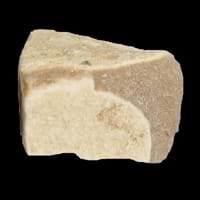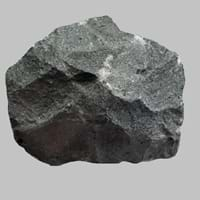Definition
Mudstone is a fine-grained, dark gray sedimentary rock, which is formed from silt and clay and is similar to shale but has less laminations
Latite is an igneous, volcanic rock, with aphanitic-aphyric to aphyric-porphyritic texture
Discoverer
Unknown
Unknown
Etymology
From the English mud and stone, from low German mudde and stainaz
From the Latin word latium
Class
Sedimentary Rocks
Igneous Rocks
Sub-Class
Durable Rock, Soft Rock
Durable Rock, Medium Hardness Rock
Group
Not Applicable
Volcanic
Other Categories
Fine Grained Rock, Opaque Rock
Fine Grained Rock, Opaque Rock
Texture
Clastic
Aphanitic to Porphyritic
Color
Black, Blue, Brown, Green, Grey, Orange, Red, White, Yellow
Black, Brown, Colourless, Green, Grey, Pink, White
Durability
Durable
Durable
Appearance
Rough and Dull
Rough
Interior Uses
Decorative Aggregates, Entryways, Floor Tiles, Interior Decoration
Decorative Aggregates, Entryways, Interior Decoration
Exterior Uses
As Building Stone, As Facing Stone, Paving Stone, Roof Tiles
As Building Stone, As Facing Stone, Garden Decoration, Office Buildings
Other Architectural Uses
Curbing
Curbing
Construction Industry
Cement Manufacture, Construction Aggregate, for Road Aggregate, Making natural cement, Raw material for the manufacture of mortar
As a Flux in the Production of Steel and Pig Iron, As a Sintering Agent in Steel Industry to process Iron Ore, As Dimension Stone, Cement Manufacture, for Road Aggregate, Making natural cement, Manufacture of Magnesium and Dolomite Refractories
Medical Industry
Not Yet Used
Not Yet Used
Antiquity Uses
Sculpture, Small Figurines
Artifacts, Monuments, Sculpture
Commercial Uses
Creating Artwork, Pottery
An Oil and Gas Reservoir, As a Feed Additive for Livestock, Metallurgical Flux, Soil Conditioner, Source of Magnesia (MgO)
Types
Marl, Shale and Argillite
Rhomb porphyries
Features
Available in Lots of Colors and Patterns, Smooth to touch, Very fine grained rock
Host Rock for Lead
Archaeological Significance
Monuments
Not Yet Used
Used
Famous Monuments
Not Applicable
Data Not Available
Famous Sculptures
Data Not Available
Data Not Available
Formation
Mudstone forms when very fine-grained clay particles are deposited in water which settle at the bottom of water bodies. They are buried and compacted by overlying sediment hence forming mudstone.
Latite is a fine-grained, hard rock which is a type of metasomatite, essentially altered basalt. It forms with or without crystallization, either below the surface as intrusive rocks or on the surface as extrusive rocks.
Mineral Content
Biotite, Chlorite, Feldspar, Micas, Muscovite or Illite, Plagioclase, Pyrite, Quartz
Alkali feldspar, Biotite, Plagioclase, Pyroxene
Compound Content
Aluminium Oxide, NaCl, CaO, Iron(III) Oxide, Silicon Dioxide
CaO, Cl, MgO
Types of Metamorphism
Not Applicable
Burial Metamorphism, Cataclastic Metamorphism
Types of Weathering
Chemical Weathering, Mechanical Weathering
Biological Weathering, Chemical Weathering, Mechanical Weathering
Types of Erosion
Chemical Erosion, Sea Erosion
Chemical Erosion, Water Erosion, Wind Erosion
Grain Size
Very fine-grained
Fine Grained
Fracture
Not Available
Conchoidal
Porosity
Highly Porous
Very Less Porous
Luster
Dull
Subvitreous to Dull
Compressive Strength
Not Available
Specific Gravity
2.2-2.8
2.86
Transparency
Opaque
Translucent
Density
2.4-2.8 g/cm3
2.8-2.9 g/cm3
Resistance
Heat Resistant, Impact Resistant
Heat Resistant, Pressure Resistant
Deposits in Eastern Continents
Asia
Bangladesh, China, India, Russia
Not Yet Found
Africa
Ethiopia, Kenya, Morocco, South Africa, Tanzania
Not Yet Found
Europe
Austria, France, Germany, Greece, Italy, Romania, Scotland, Spain, Switzerland
Bulgaria
Others
Not Yet Found
Not Yet Found
Deposits in Western Continents
South America
Bolivia, Chile, Colombia, Ecuador, Peru, Venezuela
Not Yet Found
Deposits in Oceania Continent
Australia
New South Wales, New Zealand, Queensland, Victoria, Western Australia
Not Yet Found
All about Mudstone and Latite Properties
Know all about Mudstone and Latite properties here. All properties of rocks are important as they define the type of rock and its application. Mudstone belongs to Sedimentary Rocks while Latite belongs to Igneous Rocks.Texture of Mudstone is Clastic whereas that of Latite is Aphanitic to Porphyritic. Mudstone appears Rough and Dull and Latite appears Rough. The luster of Mudstone is dull while that of Latite is subvitreous to dull. Mudstone is available in black, blue, brown, green, grey, orange, red, white, yellow colors whereas Latite is available in black, brown, colourless, green, grey, pink, white colors. The commercial uses of Mudstone are creating artwork, pottery and that of Latite are an oil and gas reservoir, as a feed additive for livestock, metallurgical flux, soil conditioner, source of magnesia (mgo).










